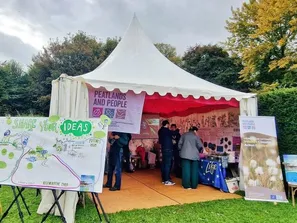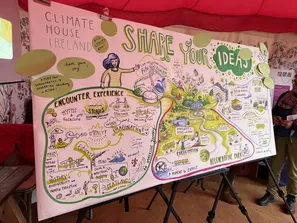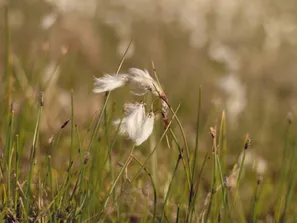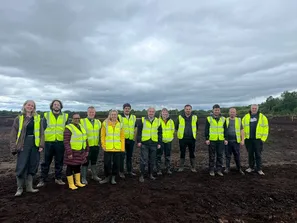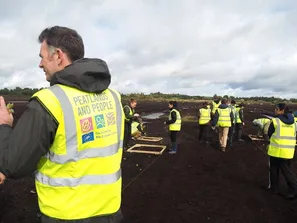19 Mar 2025
CH4Peat is an EPA-funded research project running from April 2022 until July 2025 that aims to quantify methane (CH4) emissions from two rewetted peatlands located in the Irish midlands.
Led by researchers from the Department of Biological Sciences at the University of Limerick and Trinity College, Dublin, this project is collaborating with the Bord na Móna Land and Habitats Unit and the LIFE IP Peatlands and People project to monitor carbon dioxide (CO2) and methane (CH4) fluxes (or exchanges) from two rewetted peatlands (Ballycon and Derries). To facilitate this, the researchers measured CH4 fluxes and in-situ environmental data from different vegetation microsites (Molinia grass, Sphagnum mosses, Eriophorum, Carex rostrata, Phragmites, Typha and open water) at the Ballycon and Derries peatlands.
The CH4 field monitoring, which began in June 2023 and October 2023 at the Ballycon and Derries sites respectively, concluded in October 2024. The field-measured data is utilized to calibrate a site-specific process-based, daily time step greenhouse gas model known as Peatland-VU for predicting CH4 fluxes under a range of future environmental and climatic conditions. A manuscript quantifying CH4 fluxes from all vegetation microsites will be submitted to a scientific journal in April 2025.
In addition, the project team submitted three manuscripts on the following topics:
- A peatland and wetland model review on simulating CH4 Production, Oxidation and Transport Pathways: This work aimed at gaining more clarity on how well existing wetland modelling frameworks are suited to peatland questions, by reviewing 16 peatland or wetland models operating at different spatial and temporal scales. DOI: https://doi.org/10.5194/egusphere-2024-3852;
- Peat block transplant modelling to restore peatlands: The peat-block restoration technique is a method where intact peat blocks are extracted from a donor peatland and transferred to restore peatland where the remnant peat is e.g. non-existent or contaminated. A manuscript submitted to “Mires and Peat” is currently under review.
- Simple gap-filling of missing eddy covariance CO2 flux measurements: The Eddy covariance (EC) is a well-known technique to investigate the ecosystem exchange of greenhouse gases (GHGs) between the biosphere and the atmosphere. It often experiences data gaps due to various reasons and gap filling flux data can be challenging due to its unique characteristics. The researchers in this submitted manuscript compare the use of the ’miniRECgap’ computational tool, which uses so-called ‘classic’, traditional robust and validated modelling approaches for gap-filling the missing EC CO2 flux measurements, with the standard marginal distribution sampling method (MDS) and artificial neural networks (ANN) respectively.
Currently, the CH4 project is completing the final EPA project report and two additional manuscripts. Both manuscripts are utilizing Peatland-VU” to simulate CH4 fluxes from three peatlands (Scohaboy, Ballycon and Derries) located in the Irish midlands. The CH4 project team is also collaborating with the University of Zurich, Switzerland and Pacific Northwest National Laboratory, USA to calibrate the Peatland-VU model against CO2 and CH4 flux data measured from a rice crop grown on degraded fen peat soil located in Switzerland. The CH4 Peat project presented at the American Geophysical Union (AGU) International Meeting in Washington, DC in December 2024, which was attended by approximately 25,000+ scientists from 100+ countries. At this conference, Dr. Tilak presented two scientific posters:
- “Modelling CO2 and CH4 Fluxes from a Rewetted Peatland Located in Irish Midlands”.
- “Modelling CO2 and CH4 Fluxes from a Rice Crop Grown on Peat Soils in Temperate Climate”.
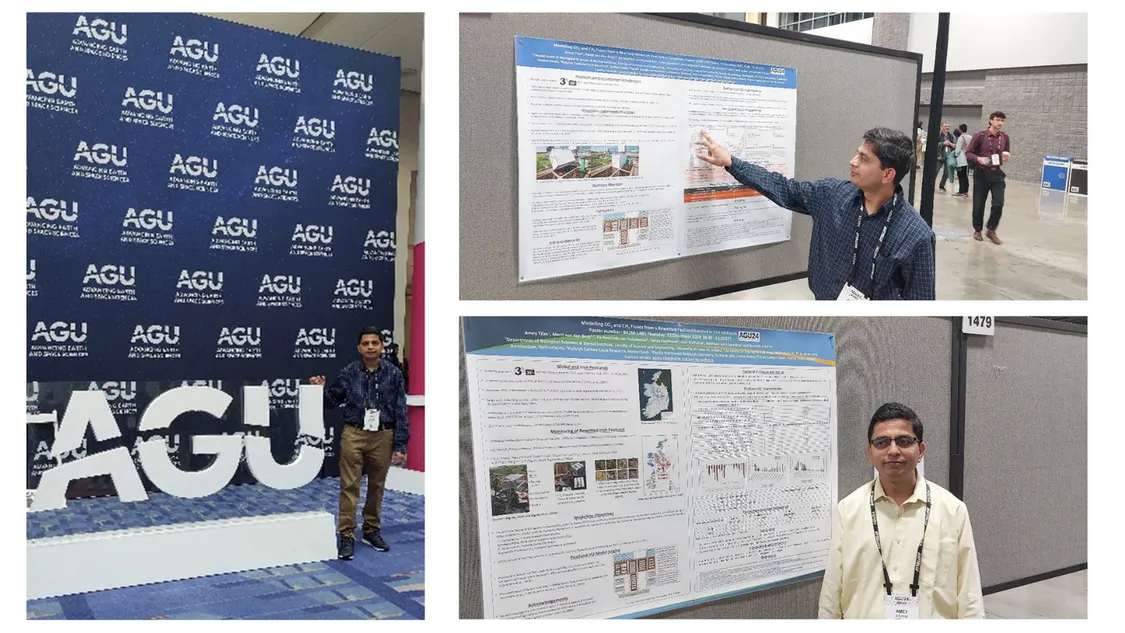
The CH4Peat project at the American Geophysical Union (AGU) International Meeting in Washington, DC, December 2024
Learn more about the project on the CH4Peat website!

